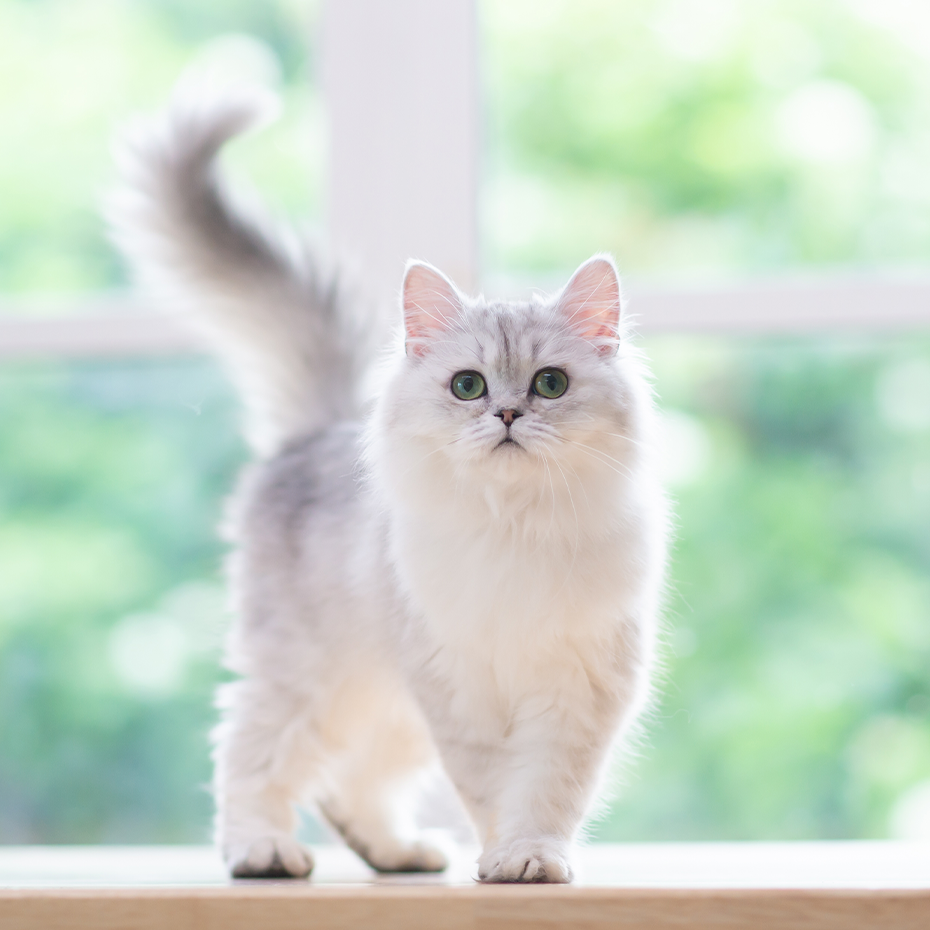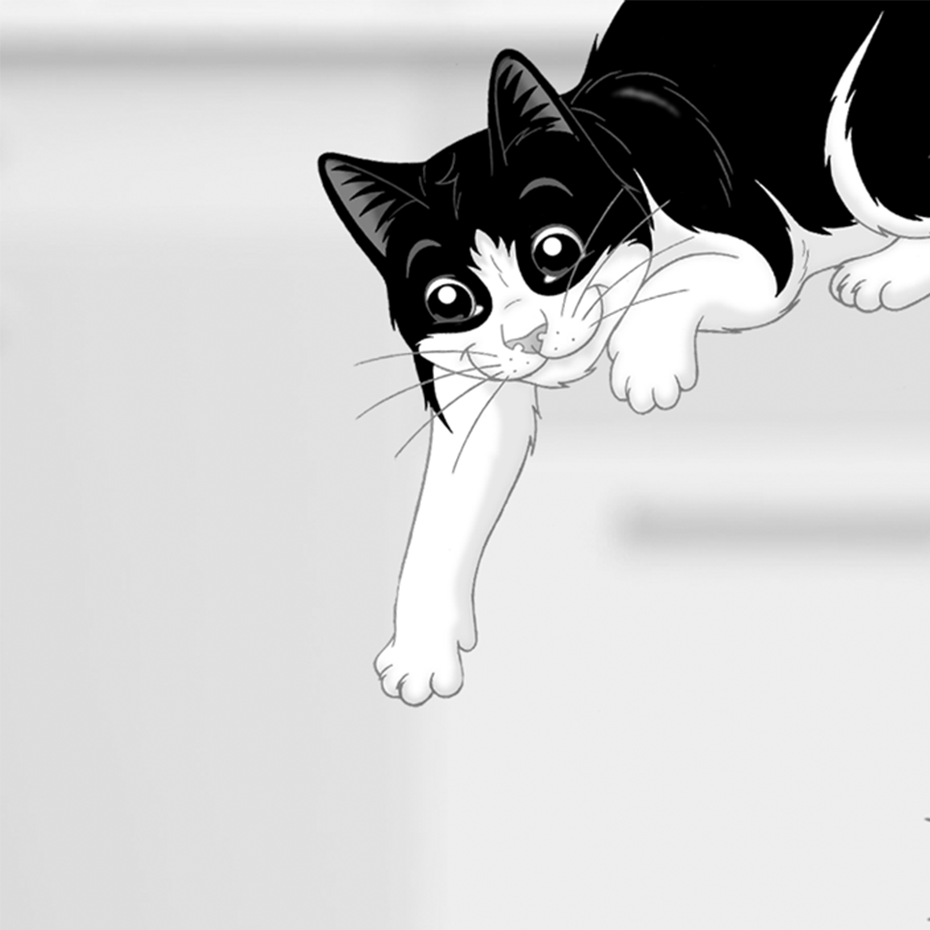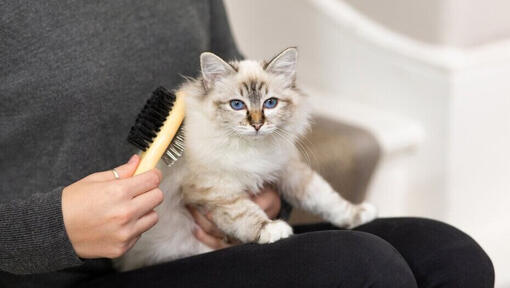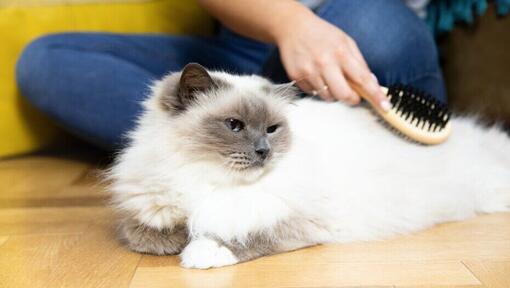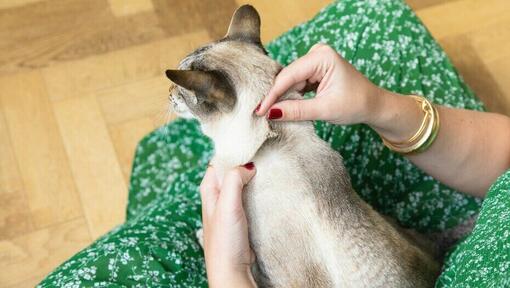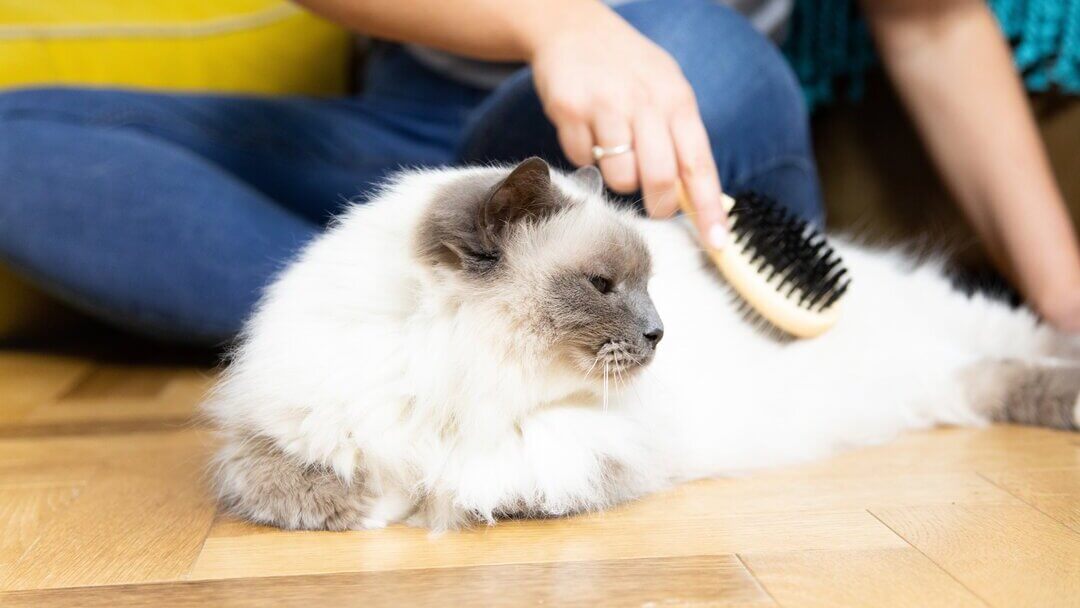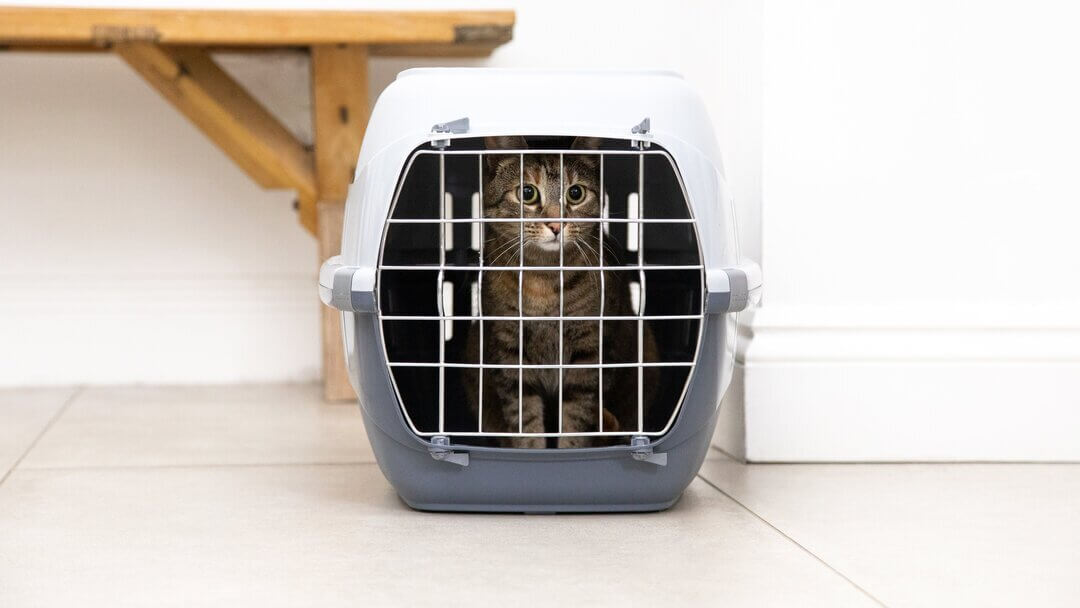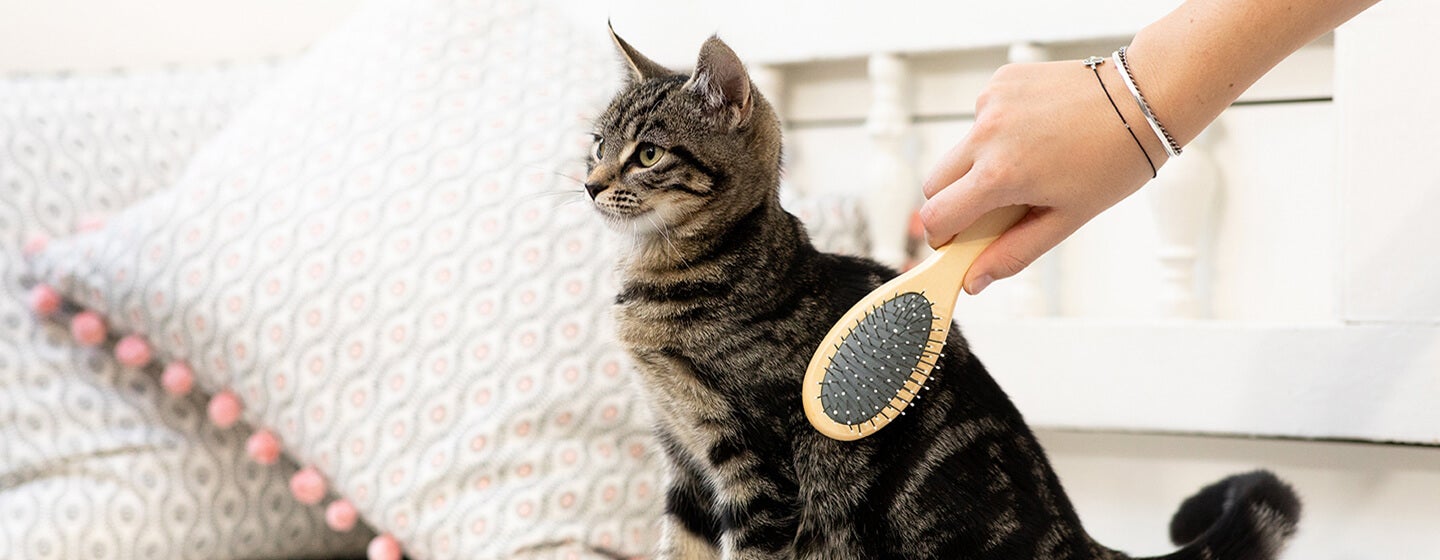
Although your cat is beautiful, they are so much more than a pretty face. Not only do they have a stunning coat, but they’re biologically designed to look after them.
Their rough tongues act like mini brushes, removing dead hair and distributing oils through their coat. They’re also smart enough to know that when these biological grooming aids are not enough – for example, if they get fur-balls or tangles – you can be counted on to help.
Kitten grooming
Kitten grooming isn't just about making your feline look fancy - it removes dead hair, keeps their coat and skin healthy, helps you build an intimate bond, and gives you the opportunity to check their overall health.
Grooming is an important part of looking after kittens, but thanks to their softer, fluffier and shorter coats, it should take next to no time to do, compared to adults. If you can get your kitten used to regular grooming from a young age, it will make life much easier for both of you in the future. The good news is that most cats love the gentle attention of being groomed, and as soon as they see a brush or comb in your hand, they’ll usually come running for the fuss.
Brushing your kitten
Long vs. short coats
How thoroughly and how often you’ll end up brushing your kitten usually depends on their type of coat. A short-coated cat will usually only need a quick 'once-over' weekly while a long-coated breed will need daily attention with the right type of equipment - ask your breeder or a groomer for advice on specific coat types.
Longhaired breeds need more cat care, and their grooming will take longer so you may want to groom your cat on a non-slip surface on a table – this will keep both of you as comfortable as possible during the process.
When they’re still a kitten, try to encourage them to enjoy the grooming experience. Take them to the table where you will want to groom them as adults and give them lots of praise and one or two treats. They will soon associate this spot with being groomed and rewarded.
How to brush your kitten
- Pop your kitten onto your lap and offer them the brush to sniff. Once they know it’s safe, many cats will rub their faces on it.
- Start brushing gently. Begin with their back and then move on to the sides of their body.
- Give your cat plenty of praise for being good and speak in a quiet, soothing tone of voice.
- Every few minutes, swap brushing for stroking them instead, as part of their pampering routine. You can offer them a treat as an extra reward.
- Repeat this several times a day, gradually increasing the length of brushing time.
- When your cat is familiar and comfortable with the sensation of being groomed you can start to brush their belly, tail, ears and other sensitive areas.
- Be extra gentle and keep the initial cat care sessions very short. There’s no rush, and the most important thing is that they feel relaxed. If you notice any signs of boredom or agitation move away from the more sensitive areas and go back to grooming their back.
While your cat is relaxed and enjoying the experience, use this time to give them a quick health check. A few things you can try as part of an “at-home” check-up are:
- Touch their paws and gently examine their claws and toes. Start with just one claw at first to get them used to the experience, and give them plenty of praise and even a treat as a reward. Over the next few grooming sessions you can try looking at two claws and so on, slowly building up your pet pedicure skills until they are completely at ease.
- If your pet’s still happily purring away at the end of a grooming session, take a moment to carefully look inside their ears and gently open their mouth to check their teeth and gums.
- Always end a kitten grooming session with a good fuss and a stroke – after all, they’ve deserved it!
Trimming your kitten's claws
When your cat climbs a tree or uses their scratching post, they may pull off the outer layer of one of their claws, but don’t worry – this is normal! Scratching is a normal part of being a cat, and their claws are layered, so if the outer layer goes, there’ll be a brand new, sharp claw underneath (you’ll sometimes find outer husks near their favourite scratching areas).
If you have an active, healthy outdoor cat, they’re unlikely to need their claws cut. Indoor cats and older cats may, however, need the occasional tidy up and trimming your cat or kitten’s claws is an important part of your cat care routine.
How to trim your kitten's claws
- Get your kitten used to the idea of claw trimming from an early age. A good way to start is to 'pretend trim' where you apply slight pressure to your cat's toes, to expose the claw, and then offer them a reward or praise.
- Whilst you’re checking your cat’s claws, give their paw pads and in between their toes a once-over too, to make sure everything is ship-shape and squeaky clean.
- Cats, like humans, can get in-growing toenails. If you suspect a claw is growing into their pad, get in touch with your vet, as it may need medical attention.
Extra weekly cat and kitten care checks
As well as brushing their coat and taking care of their claws, there are a few extra checks you can do to make sure your moggy is in tip-top condition.
- Check that your cat’s ears are clean and smell fresh. If they’re dirty, smell bad, are red or itchy or if your cat keeps shaking their head, contact your vet. Ear mites are a common problem, particularly in younger cats.
- Run your hands all over your cat's body. Feel for any scratches, lumps, bumps or spots that seem tender to them. If you’re concerned about anything, get in touch with your vet.
- Check their eyes and nose and contact your vet if you notice any discharge or redness.
- Take a look under your cat's tail. Their rear end should be clean. If it’s dirty or there are signs of worms or soreness, visit your vet.
- Finally, run your hand against the direction of the coat, to fluff their hair up. Check the hair roots and skin for signs of parasites, or flea dirt (black specks). You can prevent infestations with regular flea control but, if it’s too late, your vet will be able to advise you on treatments.
Bathing your cat or kitten
Most cats go through their lives without having to take a bath, but sometimes a quick dip is unavoidable. They may need a special shampoo to treat a skin condition, to clear up after an upset stomach or as a clean-up operation after getting something in their fur whilst out exploring.
Despite popular belief, some cats take to baths like ducks to water, especially if they’ve had the occasional warm bath from an early age. If your moggy makes it difficult for you to bathe them, a groomer will be happy to do it for you. However if you’d like to handle it yourself, follow these tips for a worry-free wash.
- Be careful with the water temperature. Too hot will scald your cat, and too cold can make them uncomfortable or even make them unwell.
- Handle your cat with care during bathing to put them at ease, and offer plenty of praise and reassurance. Food treats can be useful and it will definitely be easier if you have a second person to help – especially if they try to escape!
- Looks out for signs that your cat is getting stressed. Cats may find bathing frightening, so take care not to be bitten or scratched. If you’re concerned, speak to expert groomer.
- Make sure the shampoo you use is specifically designed for cats and check whether it needs to be left on for a given period of time (this may be the case with a medicated shampoo). Be careful to avoid getting shampoo into sensitive areas such as their eyes or ears.
- If your cat is unhappy being bathed, try washing just the parts that really need it to cut down time in the tub.
- Rinse your cat thoroughly to get rid of any soap residue
- Afterwards, dry them with a warm towel and keep them cosy until they’re dry. Avoid a hairdryer unless your cat has been used to them from a young age, as it may frighten them.
- If you have more than one cat, bath time can cause them to fight, especially if they’re stressed. Separate your bathed cats until they’re calm, then rub them all down with the same towel to distribute their scents.
